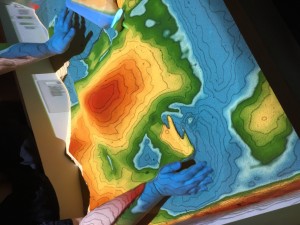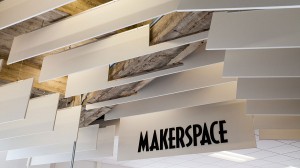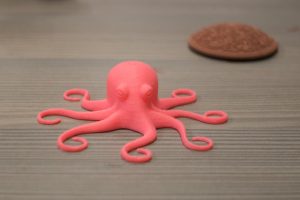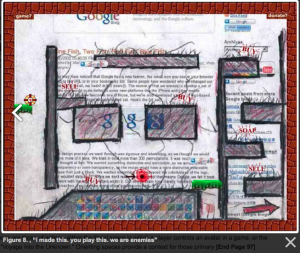Over the Moon and Down to Earth: Scholars’ Lab versions of space


Something about space has gone to our heads here in the Scholars’ Lab. Any day, I expect to come out of a trance to find I’ve been wearing a motion capture suit while I geo-referenced an historic map, programmed an arduino, flew a drone, and printed a replica of an artifact from an ancient burial site. Of course, I only imagine doing all this myself. But the interdisciplinary collaborations of Scholars’ Lab staff perform this sort of spatial magic in and around the Library every day.
The rich array of spatial research has been a forte of the Scholars’ Lab since before I joined the group (my own project had its early days here). GIS specialists and the Neatline project (now ably led by Eric Rochester and Ronda Grizzle) have been located in the Scholars’ Lab for years. But we have some more recent additions that make for an exciting mix of geospatial perspectives.
We recently welcomed Geospatial Consultant Drew MacQueen, who has been serving in Facilities Management at the University of Virginia. Drew will work closely with Chris Gist on the many GIS services needed in research and teaching at the University; see the Library’s guide. For example, a longstanding project on the Salem witch trials led by Religious Studies professor Ben Ray recently identified the site of execution, based on Chris’s topographical analysis of the viewshed and historic maps.

Will Rourk and Arin Bennet joined the Scholars’ Lab team in 2016, bringing to bear their expertise in spatial research and the high-end equipment of the former DML. They collaborate with faculty and staff in IATH, SHANTI, the Scholars’ Lab, and elsewhere on cultural heritage, much of it on or near Grounds, but some as remote (or, now, accessible) as the Tibetan capital, Lhasa. It turns out, the extended team of Scholars’ Lab people participate in interrelated projects, from mapping to 3-D printing.
The Makerspace was thriving when I arrived a year ago, organized by Jeremy Boggs and Laura Miller, and increasingly guided by Ammon Shepherd, with a team that includes DH dissertation fellow Shane Lin and graduate and undergraduate staff and drop-in experimenters. (See the Makerspace technologists.) The tentacles of this experimentation reach far.

And there were cookies. On February 15, 2017 we held the first of a new series of brown-bag lunches, this one to discuss Daniel Punday’s “Space Across Narrative Media: Towards an Archeology of Narratology,” Narrative 25 (Jan 2017): 92-112. Some argued that architecture is a better metaphor than archeology for Punday’s narratological approach, in the context of building and inhabiting things human beings make, such as the storyworlds of games or novels.

It was delightful to discuss this thought-provoking piece with 19 people, graduate students and faculty from Spanish, German, history, Slavic, computer science, and English, and library staff in archeology and Scholars’ Lab as well as IATH. One of Punday’s examples, Jason Nelson’s I made this. You play this. We are enemies. playfully makes a point about the different spaces of the game’s action and the orienting background (captured from commercial sites). We can say, we made this. We play this. We are energetic participants. We like to playfully make things that have points–the coordinates of spatial data.
